#Euphausiacea
Text
Taxonomy Tournament: Crustaceans


Euphausiacea. This order is made up of krill, small marine crustaceans. Most species form large swarms, and they are important for the marine food chain.
Isopoda. This order is made up of isopods, including terrestrial species like the potato bug and aquatic species like the giant isopod. Some eat dead matter, others are filter feeders, and some are parasites, mostly of fish.
#animals#biology#polls#poll tournament#zoology#krill#arthropods#crustaceans#ecdytes#isopods#Euphausiacea#Isopoda#0x4dv0xb2#animal tournament#Animal Tournament Round 1
107 notes
·
View notes
Text
i'm going to become a marine crustacean of the order euphausiacea
59 notes
·
View notes
Text
I don't want to be hungry on someone's post so I'm making my own but that post about krill makes me think krill would be delicious.
Also found this.
2 notes
·
View notes
Text
### Top 25 Animals with the Highest World Population
This list covers the animals with the highest populations globally, including estimated numbers and key details about their habitats and significance.
1. **Ants (Formicidae)**
- **Estimated Population:** 10 quadrillion
- **Details:** Found almost everywhere on Earth, ants are social insects that play crucial roles in ecosystems, including soil aeration and pest control.
2. **Humans (Homo sapiens)**
- **Estimated Population:** 8 billion
- **Details:** Humans are the most widespread species, inhabiting every continent and significantly altering environments and ecosystems.
3. **Krill (Euphausiacea)**
- **Estimated Population:** Several hundred trillion
- **Details:** Key component of marine food webs, particularly in the Southern Ocean, krill are crucial for the diet of many larger marine animals.
4. **Copepods (Subclass Copepoda)**
- **Estimated Population:** Hundreds of trillions
- **Details:** Tiny crustaceans found in nearly all aquatic environments, playing a major role in the oceanic food chain.
5. **Bacteria (Domain Bacteria)**
- **Estimated Population:** Quintillions
- **Details:** Microscopic organisms found in every habitat on Earth, essential for nutrient cycling, decomposition, and many biogeochemical processes.
6. **Termites (Infraorder Isoptera)**
- **Estimated Population:** Hundreds of trillions
- **Details:** Social insects crucial for breaking down cellulose in dead plant material, significantly impacting soil structure and fertility.
7. **Domestic Chickens (Gallus gallus domesticus)**
- **Estimated Population:** 25 billion
- **Details:** Widely bred for meat and eggs, chickens are the most numerous bird species and play a significant role in agriculture.
8. **Grasshoppers (Suborder Caelifera)**
- **Estimated Population:** Tens of trillions
- **Details:** Found worldwide, grasshoppers are important in many food webs and can significantly impact agriculture during swarming events.
9. **Mice (Mus musculus)**
- **Estimated Population:** Over 7 billion
- **Details:** Common in various habitats, mice are significant for scientific research and can be agricultural pests.
10. **Rats (Rattus)**
- **Estimated Population:** Billions
- **Details:** Found globally, especially in urban areas, rats are known for their adaptability and can be significant pests and disease vectors.
11. **Domestic Dogs (Canis lupus familiaris)**
- **Estimated Population:** Over 900 million
- **Details:** Domesticated for companionship, work, and various roles, dogs are widespread and diverse in breeds.
12. **Domestic Cats (Felis catus)**
- **Estimated Population:** Over 600 million
- **Details:** Popular pets worldwide, cats are also known for their roles in controlling pests.
13. **Pigeons (Columba livia domestica)**
- **Estimated Population:** Hundreds of millions
- **Details:** Common in urban areas, pigeons have adapted well to human environments and are often used in racing and as pets.
14. **House Sparrows (Passer domesticus)**
- **Estimated Population:** Hundreds of millions
- **Details:** Found in many urban and rural areas, house sparrows are highly adaptable and thrive around human habitation.
15. **Domestic Cattle (Bos taurus)**
- **Estimated Population:** 1.5 billion
- **Details:** Essential for meat, milk, and leather production, cattle are widespread in agriculture.
16. **Sheep (Ovis aries)**
- **Estimated Population:** Over 1 billion
- **Details:** Raised for wool, meat, and milk, sheep are important in many cultures and agricultural systems.
17. **Goats (Capra hircus)**
- **Estimated Population:** Nearly 1 billion
- **Details:** Valued for their milk, meat, and ability to graze on diverse vegetation, goats are widely kept in various environments.
18. **Pigs (Sus scrofa domesticus)**
- **Estimated Population:** Over 1 billion
- **Details:** Raised primarily for meat, pigs are important in agriculture and have a significant role in various cuisines.
19. **Domestic Ducks (Anas platyrhynchos domesticus)**
- **Estimated Population:** Hundreds of millions
- **Details:** Kept for their meat, eggs, and feathers, domestic ducks are important in various agricultural settings.
20. **Honeybees (Apis mellifera)**
- **Estimated Population:** Hundreds of billions
- **Details:** Crucial for pollination and honey production, honeybees are vital for agriculture and ecosystems.
21. **Mosquitoes (Family Culicidae)**
- **Estimated Population:** Hundreds of trillions
- **Details:** Found globally, mosquitoes are vectors for many diseases, including malaria, dengue fever, and Zika virus.
22. **Antelope (Various species)**
- **Estimated Population:** Tens of millions
- **Details:** Found in Africa and parts of Asia, antelopes are important for their roles in ecosystems and as game animals.
23. **Flies (Order Diptera)**
- **Estimated Population:** Quadrillions
- **Details:** Found in nearly every habitat, flies play roles in pollination, decomposition, and as disease vectors.
24. **Cockroaches (Order Blattodea)**
- **Estimated Population:** Hundreds of billions
- **Details:** Highly adaptable insects, cockroaches are found in various environments and are often associated with human habitation.
25. **Earthworms (Class Oligochaeta)**
- **Estimated Population:** Hundreds of billions
- **Details:** Essential for soil health, earthworms aerate the soil and decompose organic matter, contributing to nutrient cycling.
These animals represent a wide range of species, each playing unique roles in their ecosystems and often interacting with human activities. Their populations reflect their adaptability and ecological importance.
0 notes
Text
vimeo
Helen Ma, Condensed Blue Whale
This Project, Condensed Blue Whale, is inspired by the Chinese song Condensed Blue Whale (浓缩蓝鲸) by the artist Qiu De (裘德). It talks about a story that takes place in the year 3000, where a scientist condensed the soul of a gigantic Blue Whale inside the body of an extremely small Euphausiacea, which is a kind of half-transparent shrimp. The small body of shrimp now has the experience of roaming in the deep ocean, but the vast blue whale begins to be skeptical about the question of whether its soul is as tiny as the body it owns at this moment. It is supposed to be a romantic story that questions the philosophical essence of “who I am” – the body, the mind, or the combination of both. However, it is somehow cruel as well.
Inspired by Sabrina Ratte and her Muse, Donna J. Haraway, I started to consider the idea of the Cyborg (a combination of organism and machine) and the value of the community that everything is mixed in society, without clear binary distinctions.
When we are observing animals, are animals observing us as well? When society develops to be that high technology and human beings are getting very used to being adapted to living together with those techniques that we are not necessarily able to control, what will be human beings’ future? When we do all kinds of experiments on animals, we might also gradually become some kind of experimental object to some unknowns. Instead of the utopic idea given by Haraway, this project shows my dystopian perspective on the future community.
0 notes
Photo

Krill - The Basics of Life!🧬😉 COMMON NAME: Krill SCIENTIFIC NAME: Euphausiacea TYPE: Invertebrates DIET: Herbivore GROUP NAME: Swarm SIZE: 2.4 inches WEIGHT: 0.035 ounces SIZE RELATIVE TO A PAPER CLIP: View on Pic. The lowly krill averages only about two inches in length, but it represents a giant-sized link in the global food chain. These small, shrimp-like crustaceans are essentially the fuel that runs the engine of the Earth’s marine ecosystems. Role in the Food Chain Krill feed on phytoplankton, microscopic, single-celled plants that drift near the ocean’s surface and live off carbon dioxide and the sun’s rays. They in turn are the main staple in the diets of literally hundreds of different animals, from fish, to birds, to baleen whales. https://www.instagram.com/p/CpYbqI4jGHw/?igshid=NGJjMDIxMWI=
0 notes
Text
Animal practice 33







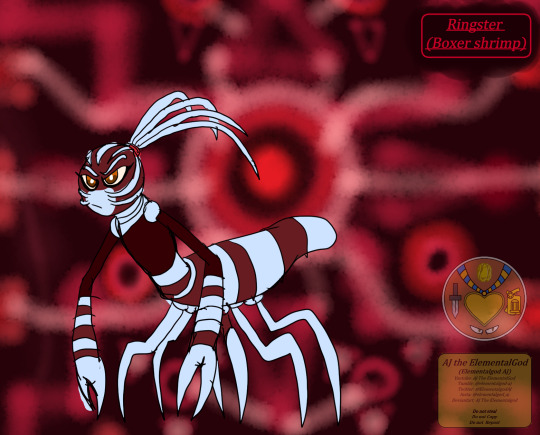
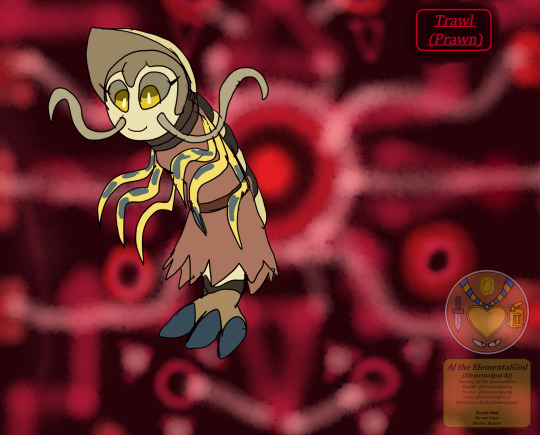

Panarthropoda
Arthropoda 3
Crustacean 2
Brachyura
Cyrus (Ghost crab/Christmas island crab)
Anomura
Hikikomori (secondary crabs)
Astacidea
Shelton (lobster)
Etta ( Crayfish)
Gebiidea/Axiidea
Clay (Mud Lobster)
Achelata
Prong (Spiny/Slipper lobster)
Caridea
Parker (Shrimp)
Stenopodidea
Ringster (Boxing shrimp)
Dendrobranchiata
Trawl (Tiger prawn)
Euphausiacea
Minute (Krill)
#the watchful eye#watchful eye#my ocs#my art#my oc#aj the elementalgod#elementalgod aj#isle 0#toonverse oc#o'kong family#neo demons#earthdemons#anthro allies#panarthropoda#arthropods#crustaceans#crabs#anomura#lobsters#crayfish#mud lobster#spiny lobster#slipper lobster#shrimp#boxing shrimp#prawn#krill
2 notes
·
View notes
Text
Let’s KRILL this love!
Did you know that Antarctic Krill can glow in the dark (like a lightstick *0*)?

They are bioluminescent! That means krill swarms look like a KPOP ocean!

Classification
Kingdom: Animalia
Subkingdom: Bilateria
Infrakingdom: Protostomia
Superphylum: Ecdysozoa
Phylum: Arthropoda
Class: Malacostraca
Subclass: Eumalacostraca
Order: Euphausiacea
Family: Euphausiidae
Genus: Euphausia
Species: Euphausia superba
(ITIS, n.d.)
Distribution and habitat
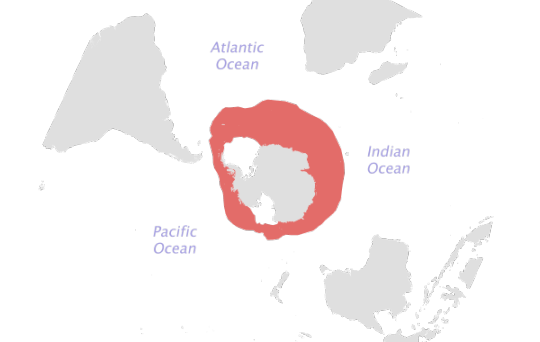
Figure 1. Geographical Distribution of Antarctic krill (fao.org, n,d,)
E. superba inhabits a wide circumpolar belt between the Antarctic Continental Shelf break and the Antarctic Polar Frontal Zone. Antarctic krill live in open marine waters (fao.org, n.d.). The larvae of the krill begin near the seafloor and gradually ascend towards the surface as it develops. Adult krills are found at depths ranging from surface waters to depths of 350 m and have occasionally been found as deep as 600 m. They usually dwell in deeper waters during the winter season (Gierak, n.d.).
Anatomy

Figure 2. External Anatomy of Antarctic Krill
E. superba known as Antarctic krills are shrimp-like in appearance though they can easily be distinguished from shrimp by their visible gills. Just like any other decapods they have exoskeleton which are made of chitin and have three body parts which is the cephalothorax, pleon and the telson. The cephalothorax bears the antennae, compound eye, 6 filter legs which are also called thoracopods and the gills. Krills have compound eyes which aid them in seeing while their antennae serve as another sensory organ as they live in the deep. The thoracopods or the filter legs on the other hand, assists the krill in straining its food from the water. Although the gills, guts and gastric mill are not part of its external anatomy, the three are visible from the outside. The middle part of its body is the pleon where the pleopods and the photophores are located. There are 5 pairs of pleopods or swimming legs that allow them to swim in the water column while the photophores or light organs act as a defense mechanism or a signal for their mates. Lastly, is the telson which is used by decapods as a paddle in caridoid escape reactions through backward propulsion (Grzimek's Student Animal Life Resource, n.d.).
Life Cycle
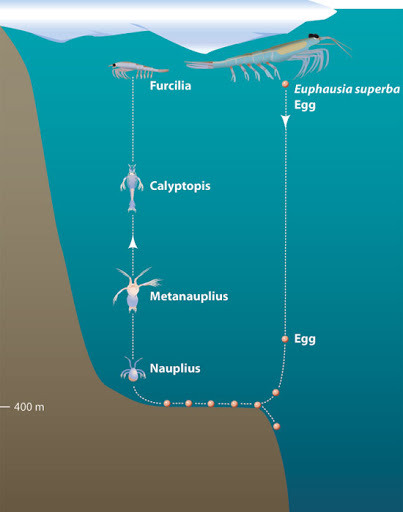
Figure 3. Life Cycle of an Antarctic Krills
Krills reproduce sexually and it usually happens when food is abundant. The male krill produces sperm packets and uses its first pair of pleopods called petasma to transfer the sperm into the thelycum of the female. They store the sperm until they are ready to lay their eggs. These eggs are fertilized once they are released by the female. These eggs settle at the seafloor and gastrulation happens. Eventually, the eggs will hatch and become a nauplius. In this the nauplius has only one eye and is not segmented yet. Then, the nauplius will molt and become a metanauplius wherein limb development begins and it will start to migrate to the surface which is known as developmental ascent. As it molts and grows, it becomes a calyptopis and eventually a furcilia wherein the movable compound eyes start to project at the edge of its carapace. The furcilia develops into a juvenile which can grow from 4 to 10 mm long (Gierak, 2013).
Ecology

Figure 4. Thoracic endopodite of krill (wikipedia.org, n.d.)
Antarctic krill are filter-feeders that feed mainly on phytoplankton. They exhibit diurnal vertical migration, which means that they rise to the surface at night to feed by using their small, hair-like legs specifically thoracic endopodites as a suspension feeding basket. Apart from phytoplankton, they also eat copepods, zooplankton, and other krill or molted exoskeletons. In the winter, they eat algae under the surface of sea ice. They are considered the dominant herbivore of the Southern Ocean. Its biomass in the Antarctic Ocean is estimated to be between 125 mmt and 750 mmt, the largest biomass of any species on earth (Hardy, 2008). Antarctic krill is the keystone species of the entire Antarctic food chain. They provide a vital food source for whales, seals, squids, penguins, fishes, albatrosses, and many other species of birds. To avoid predation, they exhibit schooling behavior or swarming. Moreover, krill may be parasitized by organisms like protozoans, particularly the genus Ephelota. This suctorian ciliates interacting with E. superba cause hydrodynamic drag on krill swimming and make the host more vulnerable to visual predators (Gómez-Gutiérrez & Morales-Ávila, 2016). Other parasitic species include Cephaloidophora pacifica and Apostoma sp.
UNLI-KRILL @ 199!
youtube
Krill’s POV
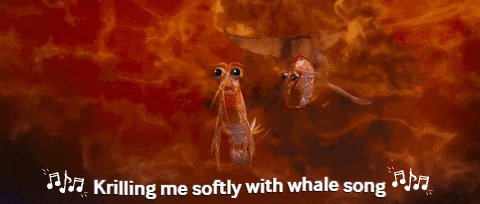
Relationship with humans
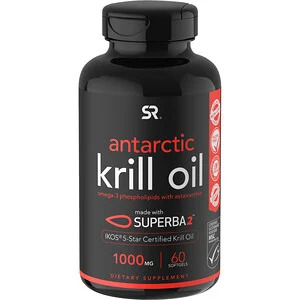
Figure 5. Sports Research’s Antarctic Krill Oil with SUPERBA 2 (ph.iherb.com, n.d.)

Figure 6. Krill/shrimp chili paste and dipping assortments in Thailand (quora.com, 2016)
Although krill is mainly used as aquaculture feed and bait for fishing, it is also processed into a variety of products for human consumption such as paste, frozen tails, sticks, etc. Krill products have been known to pharmaceutical and industrial industries since it is found that the krill's lipid content can be used as a nutritional source of fatty acids that is potential in lowering cholesterol levels. Studies found that the lipids of Antarctic krill are more stable than those of some fishes consumed by humans. Krill digestive proteases can also be injected into humans to reduce pressure on nerve roots between vertebral discs (Gierak, n.d.). Tou et al. describe Antarctic krill as a “rich source of high-quality protein” with low fat and high levels of Omega-3s and antioxidants and the main source of the renowned krill oil.
5 health benefits of Krill oil you shouldn’t miss!
youtube
Little did you know that..
They are age-defying!
*jaw-dropping moment because olay age-defying serum just cant--*
➔ They have the ability to shrink in size when starve to conserve energy during the winter. Thus, scientists can’t tell the age of a krill solely from its size.

Phytoplankton is just a summer fling!
➔ They can survive more than 200 days without food.
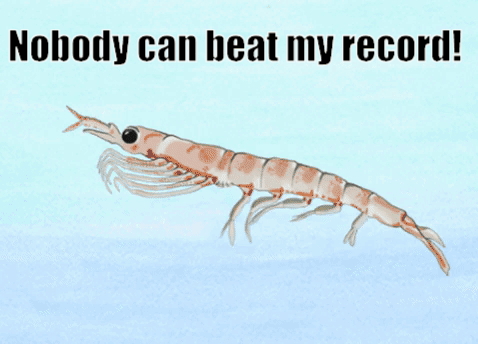
Krillions of krills!
➔ Krill swarm together in massive numbers, with as many as 30,000 in one cubic meter of a krill swarm.
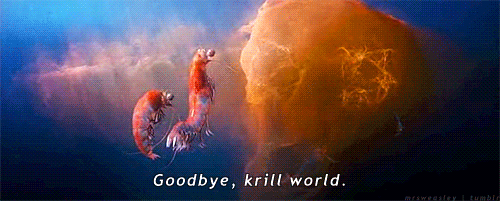
A Little Giant!
➔ It’s estimated that the total weight of Antarctic krill is more than the weight of all humans on Earth (Usoceangov, 2015).

Food is life but swimming is lifer!
➔ They are heavier than seawater and must swim constantly to stay afloat.

Climate heroes!
➔ Tarling and Thorpe (2017) have discovered that krill play a crucial role in sequestering carbon.
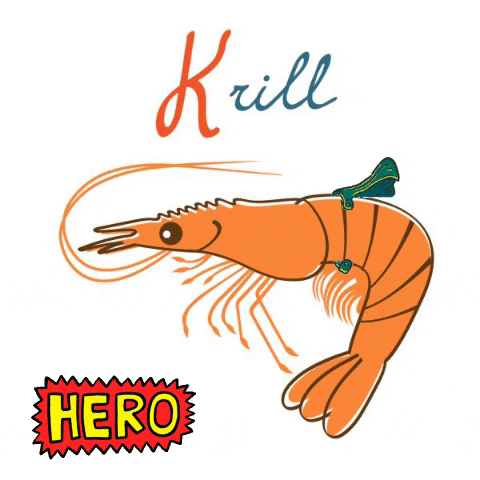
References:
Clark, D. (2012, September 17). The anatomy of the Arctic krill [Digital image]. Retrieved November 12, 2020, from http://1.bp.blogspot.com/-7NY88MHBVpc/UFfn-sAknuI/AAAAAAAAAW4/nkt1_Ba8G8k/s1600/Antarctic_krill_anatomy.jpg
Euphausia superba. (n.d.). ITIS. Retrieved November 8, 2020, from https://www.itis.gov/servlet/SingleRpt/SingleRpt?search_topic=TSN&search_value=95514#null
Euphausia superba (Dana, 1852). (n.d.). FAO. Retrieved November 10, 2020, from http://www.fao.org/fishery/species/3393/en
Exuvia of Antarctic krill [Online image]. (2005). English Wikipedia. https://commons.wikimedia.org/wiki/File:Exuviakrillkils.jpg
Gierak, R. (2013). Euphausia superba (Antarctic krill). Retrieved November 12, 2020, from https://animaldiversity.org/accounts/Euphausia_superba/
Gómez-Gutiérrez, J., & Morales-Ávila, J. R. (2016). Parasites and Diseases. Biology and Ecology of Antarctic Krill, 351–386. https://doi.org/10.1007/978-3-319-29279-3_10
Grzimek's Animal Life Encyclopedia. (2020). Krill: Euphausiacea. Retrieved November 12, 2020, from https://www.encyclopedia.com/science/encyclopedias-almanacs-transcripts-and-maps/krill-euphausiacea
Hardy, R. W. (2008). Alternative marine sources of fish feed and farmed fish quality. Improving Farmed Fish Quality and Safety, 328–342. https://doi.org/10.1533/9781845694920.2.328
Naruturd_505. (n.d.). Hoshiumi Korai A Little Giant GIF [Online GIF]. https://tenor.com/view/hoshiumi-korai-alittle-giant-smile-haikyuu-anime-gif-17909731
Oh, yeah- what?! GIF. (2013). Gfycat. https://gfycat.com/detailedfaintalbertosaurus
SuperSmiles17. (2013). Definitely one in a Krillion! [Online GIF]. https://imgur.com/gallery/YtN30/comment/16282449
Tarling, G.A., and Thorpe, S.E. (2017). Oceanic swarms of Antarctic krill perform satiation sinking. Proc. R. Soc. B., 28420172015. http://doi.org/10.1098/rspb.2017.2015
The Ozone Hole. (n.d.). [Life Cycle of Antarctic Krill]. Retrieved November 12, 2020, from http://www.theozonehole.org/images/v43n2-wiebe3en_10243.jpg
[Untitled image of a tardigrade]. (2017). BBC. https://www.bbc.com/news/science-environment-40752669
Usoceangov. (2015). Animals of the Ice - Antarctic Krill. Youtube. Retrieved November 10, 2020, from https://www.youtube.com/watch?v=RFqhocQqbgM
15 notes
·
View notes
Text
Advantages vs Disadvantages
Although the cons outweigh the pros in regards to Climate Change, there are still various advantages that directly contribute to Earth.
ADVANTAGES
The Arctic, Antarctic, Siberia, and other frozen regions of the earth might experience more plant growth and milder climates.

The next ice age could possibly be prevented

The Northwest Passage through the formerly icy Canadian Arctic Archipelago could arguably open up to transportation.

Fewer deaths or injuries would occur due to arctic conditions.

Longer growing seasons could mean increased agricultural production in some areas.

DISADVANTAGES
Changes in ocean circulation and the resulting warmer temperatures disrupt the world’s normal weather patterns, bringing about more extreme weather and an increased frequency of severe and catastrophic storms, such as typhoons and hurricanes.

Higher sea levels lead to flooding of the lowlands. Islands and coastlines are engulfed by water leading to death and disease due to flooding.

The acidification of warming oceans leads to a loss of coral reefs. Coral reefs protect shorelines from heavy waves, storms, and floods and while they only cover about 1 percent of the ocean floor, reefs provide a habitat for 25 percent of ocean species. Demolished reefs lead to increased erosion and coastal property damage and the extinction of species.

Warming ocean waters mean increased melting of glaciers and ice sheets. Smaller ice sheets form each subsequent winter, which has a devastating impact on the habitat of cold-climate animals and the Earth’s reserves of freshwater.

Less sea ice, warmer water, and increased acidity are catastrophic for krill which forms the base of the ocean's food web and feeds whales, seals, fish, and penguins. Emperor penguin colonies are also expected to decline due to the loss of sea ice and rising temperatures.

Word Bank:
Coral reefs- An underwater ecosystem characterized by reef-building corals
Glaciers- a slowly moving mass or river of ice
Ice sheets- a permanent layer of ice covering an extensive tract of land
Krill- any small shrimplike marine crustacean of the order Euphausiacea
Sources:
Is there any upside in Global Warming? Matt Rosenberg. July 11, 2019.
1 note
·
View note
Text
Rayong beach comes alive with krill fishing #SootinClaimon.Com
#SootinClaimon.Com : ขอบคุณแหล่งข้อมูล : หนังสือพิมพ์ The Nation.
https://www.nationthailand.com/in-focus/40006489
Rayong’s Suan Son Beach is bustling with fishermen catching krill, much to the excitement of tourists. Krill (Euphausiacea) has doubled in price from 2020 as its popularity increases. It is used to cook various types of delicious dishes, including high-quality shrimp paste.
On…

View On WordPress
0 notes
Photo

KRILL OIL GOLD EDITION 60 PERLAS - SCIENTIFFIC NUTRITION Krill Oil Gold Edition de Scientiffic Nutrition es un producto compuesto por aceite de krill antártico. El Krill es el nombre por el que se conocen genéricamente a los eufusiáceos (Euphausiacea) que son un tipo de crustáceo que se alimenta de fitoplancton. El aceite derivado de Krill es rico en ácidos grasos esenciales Omega 3 y 6. EL aceite de krill es muy estable y libre de metales pesados, de hecho se considera más eficiente que cualquier aceite de pescado. El aceite de Krill tiene la capacidad de mejorar el dolor articular, siendo muy útil en procesos inflamatorios. Principales beneficios Krill Oil Gold Edition de Scientiffic Nutrition: Fuente de ácidos grasos esenciales Omega 3 y Omega 6. Mejor absorción que el aceite de pescado. Rico en ácido eicosapentaenoico y ácido docosahexagenoico (EPA/DHA) que contribuyen a la función normal del corazón. El ácido docosahexaenoico (DHA) contribuye al mantenimiento de la función normal del cerebro y el mantenimiento de la visión normal. Ayuda a regular los índices de colesterol y triglicéridos, además de tener propiedades antioxidantes. El aceite de Krill tiene mejor biodisponibilidad y absorción que el aceite de pescado, siendo también más estable y resistente a la oxidación que este último. Krill Oil te ofrece una potente dosis de aceite de Krill purificado fácil de asimilar en cada cápsula blanda de gelatina. Presentación: Envase de 60 perlas. Modo de empleo: Tome 2 cápsulas al día con un gran vaso de agua. https://www.naturfactory.com/acidos-grasos/omega-369/krill-oil-gold-edition-60-perlas-scientiffic-nutrition.html 19,90 €
#naturfactorysport#tiendasuplementos#tiendadeproteinas#wwwnaturfactorycom#complementoalimenticio#nutriciondeportiva#nutricionespecializada#suplementacondeportiva#suplementosdeportivos#suplementosnutricionales#suplementosalimenticios#tiendadeproteinasenjerez
0 notes
Photo

EL ATÚN ROJO. ALGUNAS CARACTERÍSTICAS. Libro CIMARRÓN José L. Cort) 1ªpart: El atún rojo,Thunnus thynnus (L.), del Atlántico y Mediterráneo pertenece a la familia de los peces escómbridos (Scombridae).Puede llegar a pesar 725 kg, alcanzar una longitud de 3,3 m y vivir más de treinta años. El registro oficial del mayor atún rojo es de 679 kg, un pez capturado en aguas de Nueva Escocia (Canadá) en 1979, siendo el actual récord Guinness. Forma grandes cardúmenes y se alimenta principalmente de otros peces, cefalópodos, pequeños crustáceos como el krill (Euphausiacea) y cangrejos pelágicos. Su forma es altamente hidrodinámica ya que está totalmente adaptado a la movilidad.Habita en aguas templadas del Atlántico Norte y el mar Mediterráneo (hasta el mar Negro). En la parte oriental del océano Atlántico se encuentra desde Senegal y Cabo Verde (15 N) hasta cerca del Círculo Polar Ártico (75º N), donde se registran temperaturas de 5ºC.En la parte occidental, desde Brasil hasta Terranova. También se ha localizado en el Atlántico sur. Su torrente sanguíneo forma el núcleo de un sistema de intercambio de calor altamente evolucionado, por lo que su temperatura interna puede mantenerse hasta 21°C más alta que la del agua que lo rodea, siendo ésta una de las razones de su amplia distribución en el océano. El atún rojo puede aparecer en las cálidas aguas de las Bahamas a cerca de 30°C y 50 días después en aguas noruegas, donde el agua apenas alcanza los10° C. •••Las migraciones del atún rojo dependen de la edad y la longitud de los peces y están relacionadas principalmente con el desove y la búsqueda de alimento.Las migraciones de peces adultos (>40 kg) hacia las zonas de desove en el Mediterráneo y su regreso al océano para alimentarse se conocen desde hace milenios.Sus migraciones se hacen cada vez mayores a medida que aumentan su tamaño. •••Para realizar la reproducción los atunes rojos emigran formando grandes bancos que eligen las áreas más apropiadas en función de numerosas variables ecológicas y ambientales. En general, las migraciones de este pez, tanto en adultos como juveniles (<40 kg), parecen estar asociadas a los grandes sistemas de corrientes oceánicas. (en Almansa) https://www.instagram.com/p/B_IOZuYKgfQ/?igshid=1wv5zrbfj7xbd
0 notes
Photo

Tetra Betta 100 ml / 27 g Forro de alta calidad forro diseñado para satinado, Splendens (Betta principal) de pescado y otros peces laberinto: enthaelt un porcentaje de proteínas por adición de camarón apropiada y Euphausiacea proteínas animales foerdern el crecimiento y la auspraegung de aletas con natuerlichen farbverstaerkern Composición: Pescado y subproductos de pescado, cereales, vegetales eiweis extractos, levaduras, suave de animales y el cáncer (Arte Mia salina 3,3%, gefriergetr kleink liofilizados rebse (Euphasia Pacifica) 3,3%), desechos y Grasas, azúcar, algas, minerales.
0 notes
Text
Dictionary (pt.dxciii)
Words taken from the “Postscript” chapter and onward in Landmarks by Robert Macfarlane:
solastalgia (n.)
a neologism that describes a form of mental or existential distress caused by environmental change. In many cases this is in reference to global climate change, but more localized events such as volcanic eruptions, drought or destructive mining techniques can cause solastalgia as well.
skylark (n.)
a lark, Alauda arvensis of Eurasia and North Africa, that sings while hovering in flight.
cuckoo (n.)
any of various birds of the family Cuculidae, e.g., the black-billed cuckoo Coccyzus erythropthalmus or yellow-billed cuckoo C. americanus of North America, with brown backs and white underparts, or the Eurasian grey or brown speckled bird, Cuculus canorus, which leaves its eggs in the nests of small birds and has a distinctive two-note call, the first hearing of which is regarded as a harbinger of spring.
estavelle (n.)
a ground orifice that, depending on weather conditions and season, can serve either as a sink or as a source of fresh water.
dendrophile (n.) ❤
a person who loves trees.
culmen (n.)
the upper ridge of a bird’s bill.
dunnock (n.)
a small passerine, or perching bird, Prunella modularis, found throughout temperate Europe and into Asia.
apricity (n.)
obsolete. the warmth of the sun in winter.
krill (n.)
a small shrimp-like planktonic crustacean of the order Euphausiacea, important as food for fish, and for some whales and seals.
wadi (n.)
a rocky watercourse in North Africa etc., dry except in the rainy season.
0 notes
Text
Kril Nedir? Hakkında Bilgi
Kril Nedir? Hakkında Bilgi
Krill, bir tür adı olarak Euphausiacea ailesine bağlı küçük ıstakoz benzeri hayvanları içerir. Bütün okyanuslarda derin soğuk sularla ılık yüzey suları arasındaki bölgelerde krill görülür. Antartika denizlerinde görülen Euphausia superba türleri bu hayvanların en önemli örneklerindendir. En fazla 5.5 cm uzunluğunda olan ve karidese benzeyen ve “suyun üstünde olan bu hayvanın solungaçları…
View On WordPress
0 notes
Text
Cambiamenti climatici e “ghiacciai bollenti”: 40% in meno per quegli alpini in 50 anni
Cambiamenti climatici e “ghiacciai bollenti”: 40% in meno per quegli alpini in 50 anni
Artide, Antartide Alpi, Himalaya, Patagonia, Alaska, questo solo alcuni dei “santuari del ghiaccio” nei quali è collocato quel 40% del nostro pianeta ricoperto da ghiacci e manto nevoso, fondamentale sistema di raffreddamento che si va gradualmente deteriorando a causa del riscaldamento globale. A fornirci una visione planetaria sul fenomeno della riduzione dei ghiacci del pianeta e dei suoi…
View On WordPress
#Alaska#Alpi#Brahmaputra#Crysosat#Euphausiacea#Gange#Ghiaccio bollente#Himalaya#Indo#IPCC#Kilimangiaro#krill#Mekong#Patagonia#Ruwenzori#WWF
0 notes